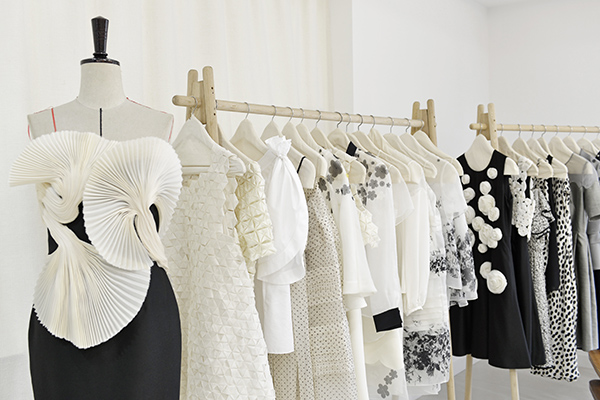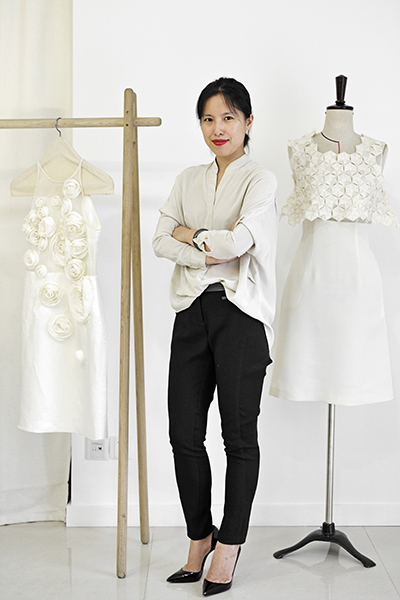

Fashion designer Yang Fang makes origami an essential element in every collection her brand has produced.[Photo/provided to China Daily]
Shanghai fashion designer Yang Fang is definitely not the first to seek inspiration from origami for her runway looks.
One of the most notable collections in recent years, if not also the most wearable, it may just be the work of Japanese fashion house, Issey Miyake, with their collections featuring three-dimensional structures reduced to two-dimensional geometric patterns.
But Yang, a “country girl” whose childhood was filled with simple pleasures of nature and origami, might be the most determined paper-folding aficionado in the fashion world.
In 2008, the graduate of ESMOD, the 174-year-old fashion school in Paris, founded womenswear brand, By Fang. Since then, origami has been an essential element in every collection the brand has produced. Now, almost seven years later, her capacity to be inspired by paper is “far from being exhausted”.
“It’s a thousand-year-old art in China, encouraging millions of children, before the electronic age, to create all kinds of possibilities from just a piece of paper. And now, I am just replacing paper with fabrics, with more possibilities from silk, to cotton, to cashmere,” Yang says.
Yang, the daughter of two middle school teachers who were sent to China’s rural areas to be “reformed” in the 1960s, spent her childhood years in the countryside where she got familiar with origami. Yang first had the idea of starting her own ready-to-wear fashion brand in Paris. The French capital was, for Yang, a “revolutionary” fashion experience. But in 2013, when Chinese fashion buyers, independent designers and press suddenly poured into Paris Fashion Week, she decided it was time to bring the label back to her parent’s hometown-Shanghai.
“I had never seen so many people from the fashion industry than in that single week,” Yang says. In China, Yang was witness to “radical change” in the public mindset: Fashion-oriented women no longer took pride in owning or carrying a Birkin, but found it embarrassing to wear the same dress as, say, colleagues, or even strangers on the street.
Yang’s elegant, feminine, and slightly dressy collections happened to fill the gap between super-expensive pieces from luxury brands and mass-produced items from fast fashion lines. A silk top with a floral print and handcrafted petals-the best-seller from her 2015 spring summer collection, is priced at about 5,000 yuan ($781).
“The last thing we need is a so-called fast fashion or high street fashion brand, which is unfriendly to the environment, of low quality, and is manufactured in very poor conditions,” says Yang. Her studio, a spacious apartment in downtown Shanghai, has 15 or so seamstresses dressed in white robes, quietly and patiently hand-folding fabrics. It is, says Yang, “slow fashion”, creating pieces that will: “still be ‘in’ in 10 years’ time”.
The team of seamstresses also help create tailor-made evening gowns ordered by Yang’s customers, which now account for 40 percent of the business. The business was started by Yang and her husband, a French businessman who used to work as an executive in a foreign corporate in Shanghai.
A frequent guest, as well as participant, of Paris Fashion Week, Yang’s collections can be found in New York, Tokyo, the Middle East and of course, Shanghai.
